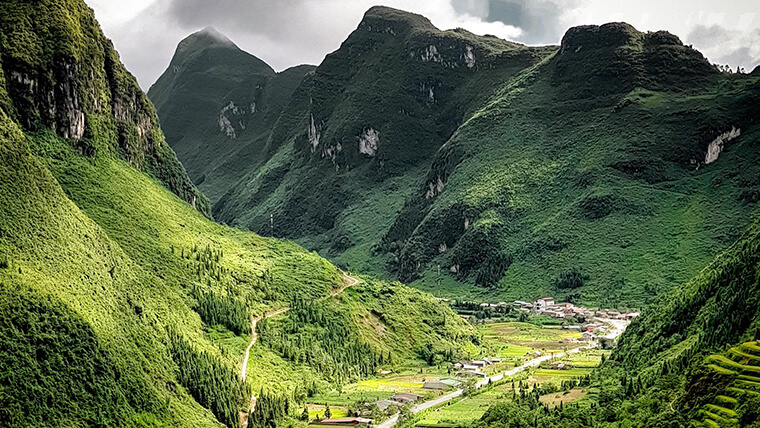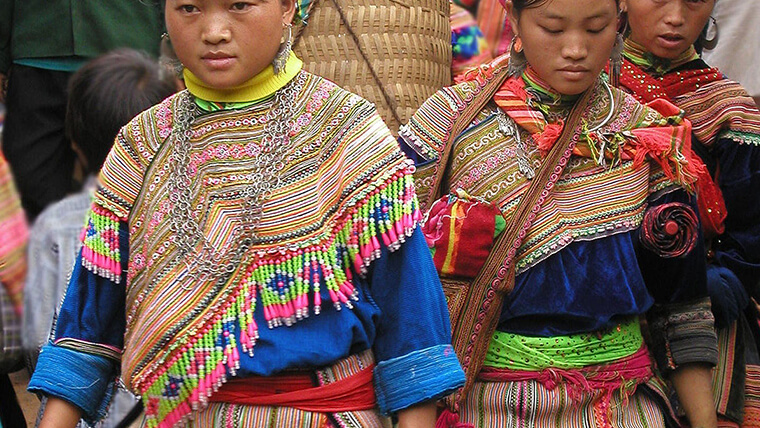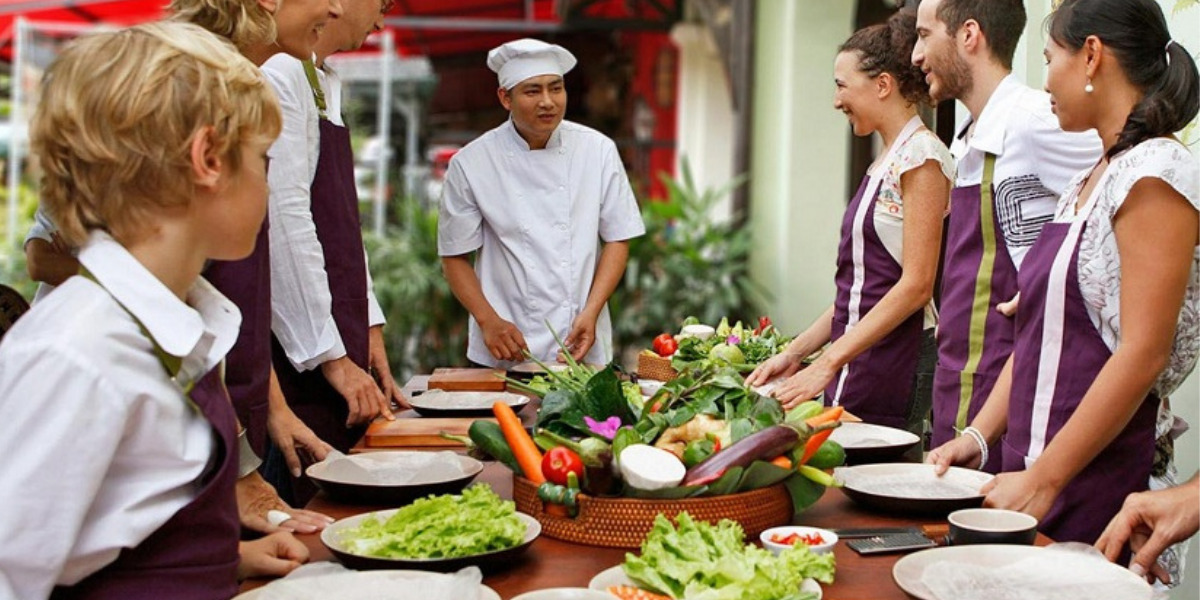Hmong people in Vietnam accounted for about 1 million, considered as a main ethnic minority, mainly living in the mountainous regions on the high hills bordering China (China - is the source of the birth and development of the ancestors of the Hmong before migrating south due to political instability and disagreement). Hmong people communities in Vietnam live in harmony but still retain their lineages' identity. Sapa, Ha Giang, Lao Cai,... are the most ideal destinations to visit and have a deep insight into this tribe’s culture and lifestyle when traveling to Vietnam.
I - The origin of Hmong in Vietnam
In Vietnam, the Hmong people live mostly in the northern mountainous regions with a population of nearly 1 million, ranking 8th among the most populous ethnic groups in Vietnam. The ancestors of the Vietnam Hmong people originated in the South of China. The mountainous areas at altitudes from 800m to 1500m - the remote areas & having the same geography & weather conditions as the Yunnan mountains in China - are ideal settlement areas for the Hmong. After being subjugated and shamed by the Chinese feudal dynasty in the 18th, 19th century, they started moving to the South and settled in the high mountainous areas of Vietnam, Laos, and Myanmar.

Breathtaking view of Meo Vac district, Ha Giang province - Source: Ins Ultradx4
The first place where Hmong people in Vietnam were settled was the Meo Vac district in Ha Giang province about 300 years ago, then extended into other places of Lao Cai province, Moc Chau district of Son La province,...
In the past, to stay away from Han people, Hmong people often lived in clusters in remote areas and remained in the habit of migrating and cultivating seasonally. After moving to Vietnam & being encouraged to settle down in one place, the Hmong people lived in groups and formed ethnic villages as seen today.
II - How many groups of Hmong in Vietnam are there?
There are 4 groups of Hmong people, including the Hoa H'mong, the Green Hmong, the White Hmong, and the Black Hmong. Until now there is no official research and published documents on the origin of lineages of each Hmong group, however, the distinctive culture of each group of Hmong people in Vietnam has been well-preserved and handed down by generations.

Women Hmong in their costume - Source: Wikipedia
Normally, the names of Hmong groups are associated with the main color of clothing and the pattern they wear. Similarities and differences between the 4 groups:
Similarities:
Although divided into 4 different groups, they have many similarities in culture, lifestyle, and dialects. The colorful costumes are the major difference among these groups of Hmong people in Vietnam.
Differences:
| Group | Another name | Women’s costume |
| Hmong Hoa | Hmong Lềnh | Indigo fabric skirt, flower-embroidered bottom hem, and armpit shirt; the shoulder and chest part with embroidered snail-shaped fabric; long hair wrapped around the head. |
| Hmong Xanh | Hmong Chúa | Indigo fabric skirt, the square bottom hem is embroidered with a cross pattern; One-button shirt, left-cut collar, and embroidered flowers. |
| White Hmong | Hmong Đu | White dress, embroidered on the arms and back coverings; Place your hair in a large tip at the top of your head, shave it around, and wrap it in a scarf. |
| Black Hmong | Hmong Dú | Indigo fabric skirts, patterned hem, and skirt length are shorter than that of H'mong Hoa; vest split between chest, arm, and embroidered patterned shirt. |
III - Cultural facts of the Hmong in Vietnam
Although having experienced lots of historical upheavals, suffered great division in the community, changes in living conditions and residence areas, the Hmong people have preserved the quintessence and values of culture and tradition.
1 - Traditional costumes and jewelry of Hmong people in Vietnam
Traditional costumes are the most typical mark representing the long-standing and unique culture of the Hmong.
The costume has a multi-part & layer including underwear, a knee-length skirt, a blouse (open at the front & unbuttoned), a long belt on the waist, an apron covering the skirt, and a scarf head wrap. Hmong women's clothes are made from linen or woven, then dyed or embroidered with floral and geometric patterns. Each group of Hmong women has different ways of dressing.
Men's clothing of Hmong in Vietnam is usually a short blouse with narrow blouse body & wide sleeves. Men's pants are wide-legged, lame-legged pants that are comfortable when going to the forest, hunting, or planting in the fields. Men are covered with a scarf, wear a round hat & a silver necklace.

In addition to costumes, the Hmong people in Vietnam also wear kinds of jewelry such as silver rings, silver necklaces & bracelets. If wearing two rings, it means they got married. On holidays or festivals, the most beautiful & colorful clothing is worn by Hmong women. In the tradition of Hmong, the outfits of the girls are knit & embroidered by themselves for important occasions.
2 - Beliefs of Hmong in Vietnam
In the culture of the Hmong, traditional beliefs are closely linked with the conceptions and behaviors of the ancestral world, the house ghost system, animism, shamanism, and folk rituals. The main forms of belief of the Hmong are ancestor worship, ghost worship, agricultural worship, human life cycle-related beliefs, and festival-related beliefs.

The conceptions about the universe, about the soul, about people, about all things, and especially about the ghost world of the Hmong are beliefs that have existed for a long time and have been preserved until today.
For example, the Hmong believe that humans have three souls (dak/da) residing in three different places in the body. The first soul is in the head area, the second is in the chest area and the third is in the navel area.
The Hmong in Vietnam abstain from rubbing their heads, especially children's heads, because children's souls are still weak, rubbing their heads will make the souls leave and make them sick. The Hmong often wear a necklace to protect the chest area.
The Hmong believe that man is a combination of soul and body. When people are healthy, the soul and body are living in harmony. When a person is sick, the soul leaves the body. When someone in the house is sick, some souls may have gone, and need to call the soul. That's why the soul-calling ceremony is very popular in the Hmong community.
You may find it interesting: An overview about Vietnamese people
3 - Cultural festivals of Vietnam Hmong people
Hmong ethnic has many festivals with the national identity and culture. Some of the most outstanding festivals are:
Nao Song Festival
This festival is held on the top of the mountain on the 6th day of the 6th lunar month. This festival is to worship the god with a pair of roosters, a pig, and wine to ask for health, peace, and prosperity.
Gau Tao festival of Hmong people in Vietnam
This typical Hmong festival is held in the spring to celebrate a year of wealth, health, and prosperity. There are many folk games & singing activities taking place and attracting young people.
Tet of the Hmong
This is an event that takes place over a month, starting from November 30th of the lunar calendar every year. Like the Tet holiday of the Kinh, the Hmong people make many traditional cakes.
4 - Marriage of the Hmong in Vietnam
Marriage within the same clan is forbidden. In Hmong society, the male-dominated position, and polygamy were common. A young woman, after crossing the threshold of her husband's house and performing an ancestral memorial, is no longer entitled to return to her parents, unless expressly permitted by her husband's parents and with her husband's consent.
In the custom of Vietnam Hmong people, when a husband dies, the widow must marry her husband's younger brother and she will be considered a second-class wife if the latter is married.
If the husband died without a brother, she would marry one of his cousins. In case of divorce, the wife returns to her parents with the condition; she will leave the house of the latter only when she remarries. In order to regain her freedom, the widow must pay a certain amount of money to her husband as "compensation".

The "kidnapped" marriage is a famous tradition in the old Hmong society. The young man who arrested a young woman with the support of friends and forced her to cross his doorstep will notify his future wife just two days after the abduction and demand a wedding. According to custom, the young girl's family must not refuse a request.
Marriages between cousins are quite distant, encouraged by tradition.
5 - Funerals of the Hmong in Vietnam
When people leave the world, Hmong people will, depending on the cause and object, have different rituals of organizing funerals. In the past, when someone died, family members would use a gun to fire up the sky to announce it, but now it is no longer used because it is dangerous to others. The deceased was changed into a dress and brought to the coffin, the children and neighbors sitting around mournfully, in the middle was the priest doing the ceremony.
6 - Language and writing of Hmong people in Vietnam
In Vietnam, the H'Mong character is a Latin character approved by the Vietnamese government in 1961. It is built according to the phonetic language of the H'Mong branch of Sa Pa - Lao Cai, combining several phonetics of other Hmong industries. Hmong people are all aware that it is necessary to preserve the national language and identity of their people.
7 - What do the Hmong in Vietnam often eat?
The Hmong people in mountainous regions eat corn mainly and rice is a by-product, different from the Kinh. Maybe because they grow many corn plants with different ways of processing such as steamed corn (mén mén) with fat soup, corn cakes with vegetables, meat, etc In dishes, they focus on spices and colors, along with the heat helping warm the stomach in cold weather.

Hmong meals sometimes just need a pot of corn wine and a pan of “Thang Co” - stewed horse meat & organs, one by one, they will drink together and eat together. This is a beautiful, and unique feature that shows the community and equality of the Hmong ethnic group.
Some popular dishes that the Hmong often eat and you should taste are, for example, Thang Co, “mèn mén” - steamed ground corn, buffalo guard meat, salted meat, stir-fried wild vegetables,... Types of wine as corn wine, wheat wine, barley wine, banana wine,... are drunk by men every day and on holidays, funerals, and weddings.
8 - Shopping habits of the Hmong in Vietnam
The H'mong's fair is usually held on weekends and is a very busy place for ethnic minorities to exchange and trade. At fair markets, goods can be exchanged for goods without using money. Not only a place to trade, but a fair is also a place for couples to find each other, confide and date. In particular, for men, the fair is also an ideal place for them to meet and drink wine and socialize by the pan.
A typical fair market of the Vietnam Hmong people sells a lot of goods such as animals, vegetables, agricultural tools, brocade, jewelry,... Currently, the entire territory of Vietnam has several famous markets for the ethnic Hmong like:
- Pa Co fair market is located between the center of 3 communes of Hang Kia, Pa Co (Mai Chau district, Hoa Binh province) and Loong Luong (Moc Chau district, Son La province)
- Bac Ha fair market is located in Bac Ha town, Bac Ha district, Lao Cai province
- Cao Son fair market is located in Cao Son commune, Muong Khuong district, Lao Cai province
- Sin Cheng fair market is located in the center of Sin Cheng commune, Si Ma Cai district, Lao Cai province.
9 - Houses of the Hmong in Vietnam
Houses of the Hmong are usually made of earth, stone, or wood to keep warm in winter and cool in summer. A house usually has only one floor, with 3 main doors, 1 or 2 side doors, and 2 windows on either side. The house has 3 compartments, the main room to place the family altar, the left one is the bedroom of the host couple and the stove and on the right is a guest bedroom with a fireplace.

Hmong people in Vietnam often build houses on high mountains, close to water sources to facilitate living and avoid wild animals. Although the house has been constantly improved to suit natural conditions, it still has many cultural, spiritual values, and national identity. They think that everything has a soul, so their house too, the door often faces south to catch the cool breeze and peace.
10 - Craft of Hmong people in Vietnam
The Hmong people weave fabrics entirely from nature with flax fibers obtained from flax - a large cluster tree in the northern mountainous region. It takes a lot of effort to get the finished product, so this fabric is beautiful, durable, and has high value. The most famous one is Lung Tam commune, Quan Ba district, Ha Giang province with the famous traditional linen village near and far.
The Vietnam Hmong people also focus on cultivation and shifting cultivation rather than breeding. Due to the mountainous terrain, this place is cultivated with rice and crops on terraced fields to facilitate water intake and irrigation. This also shows the adaptation and creativity in difficult and arduous circumstances of the Hmong people.
It is impossible not to mention the saying "Live on a rock, die buried in rock" of the Hmong people in Vietnam. In the dangerous rocky mountains, the corn sprouts are still green and lush, flowers and grass are still vibrating brightly, anyone coming here can not help admire the beauty of labor as well as the intense vitality of all things. They "catch stones to bloom", yearning for a warm, happy life with a strong will that cannot be lost.
The Hmong in Vietnam has a national identity with cultural characteristics that are of great importance and deserve to be preserved and preserved forever. They also attract domestic and foreign visitors with the warmth and honesty of the Hmong ethnic people, not only with their specialties in food, festivals, and costumes.







.jpg) — Ha Bich
— Ha Bich





































